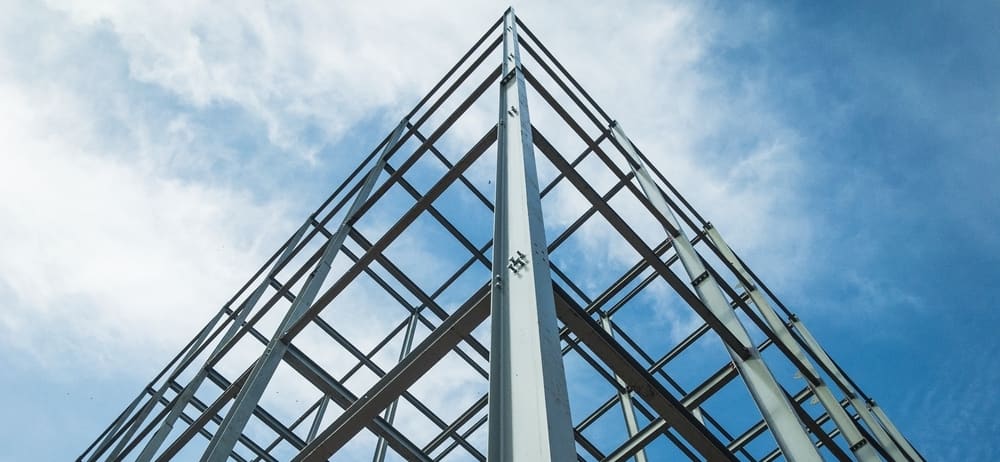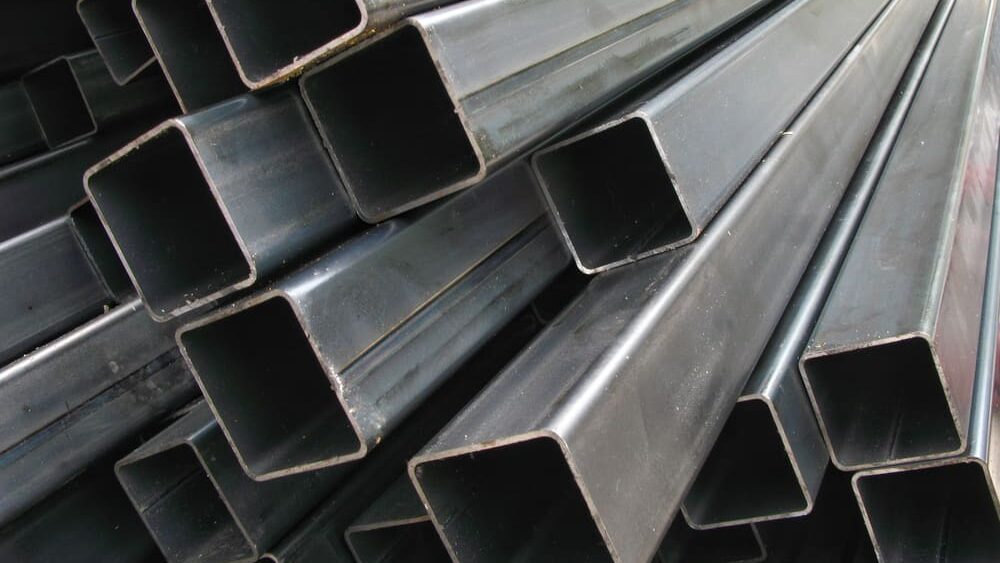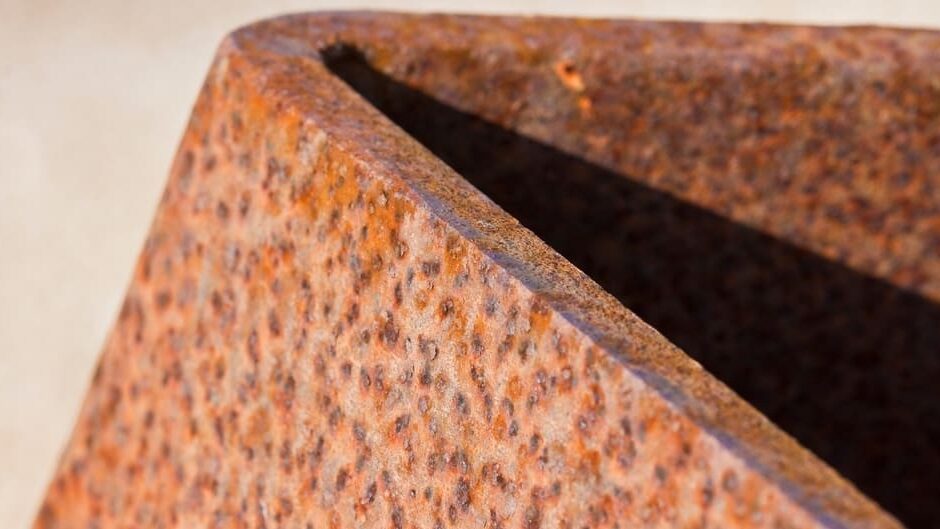A Guide To Structural Steel

A Guide To Structural Steel
A Guide To Structural Steel
Structural steel is the backbone of the construction industry, being used in everything from buildings to bridges to homes – just about everywhere. This versatile material is known for its exceptional strength and durability, making it one of the best choices in the construction industry.
Structural steel is also a preferred construction material due to its high strength-to-weight ratio, meaning that it can support heavy loads without adding unnecessary weight to a structure. Structural steel is also resistant to fire, which is another reason why it is often used in building construction.
If you’re looking to purchase structural steel in bulk, here are the types you should be in the market for, as well as their benefits to your project.
Structural Steel Types And Their Applications
There are several different types of structural steel, each of which has its own unique properties. Depending on your project, you’ll want to source the correct type.
Mild Steel
Mild steel is a type of carbon steel that is widely used in construction, manufacturing, and other industrial applications. Also known as low carbon steel, mild steel typically includes up to 0.25% carbon, with small amounts of other elements such as manganese, silicon, and sulphur. The low carbon content of mild steel makes it relatively soft and malleable, which means it is easy to shape and form using a variety of techniques such as welding, cutting, and machining.
Despite its low carbon content, mild steel is still strong and durable, with a tensile strength of around 400 MPa (megapascals). It is also resistant to corrosion and other forms of wear and tear, although it is not as corrosion-resistant as other types of steel such as stainless steel. In addition to this, mild steel is on the more affordable end of the scale when it comes to steel products.

Carbon Steel
Carbon steel is a type of steel that contains varying amounts of carbon as the primary alloying element. In general, carbon steel contains between 0.05% and 2.0% carbon by weight, although this can vary depending on the specific grade and application.
Carbon steel is one of the most widely used types of structural steel in construction, manufacturing, and other industrial applications due to its strength, durability, and versatility. It is a popular choice for everything from building frames and bridges to automotive parts, machinery, and tools. It’s also divided into a number of classes, including:
- Low. Also known as mild steel, low carbon steel contains between 0.05% and 0.25% carbon by weight. It is relatively soft and malleable, which makes it easy to form and weld, but of course is not as strong as other types of steel.
- Medium. Medium carbon steel contains between 0.3% and 0.6% carbon by weight. It is stronger and harder than low carbon steel, but also more difficult to work with due to its increased hardness.
- High. High carbon steel contains between 0.6% and 1.5% carbon by weight. It is extremely hard and strong, which makes it ideal for applications such as cutting tools, springs, and high-strength wires.
- Ultra-High Carbon Steel. Ultra-high carbon steel contains between 1.5% and 2.0% carbon by weight. It is the hardest and strongest type of carbon steel, but also the most brittle and difficult to work with.
Stainless Steel
While not as commonly used as mild or carbon steel, stainless steel is a popular choice for certain structural applications. It is highly resistant to staining, making it ideal for structures in harsh or corrosive environments. Due to stainless steel containing a minimum of 10.5% chromium by weight, stainless steel has some unique characteristics including its resistance to corrosion, staining, and rust.
Similarly to carbon steel, There are several different grades of stainless steel, each with its own unique properties and applications. Some of these common grades are:
- Austenitic Stainless Steel. This is the most common type of stainless steel, and is characterised by its high levels of chromium and nickel. It is highly resistant to corrosion and staining, and is often used in applications where hygiene and appearance are important.
- Ferritic Stainless Steel. Ferritic stainless steel contains high levels of chromium, but lower levels of nickel than austenitic stainless steel. It is less corrosion-resistant than austenitic stainless steel, but is still highly durable and is often used in applications where strength and heat resistance are important.
- Martensitic Stainless Steel. Martensitic stainless steel contains higher levels of carbon and lower levels of nickel than other types of stainless steel. It is extremely strong and hard, but is also more brittle and difficult to work with.
High-Strength Low-Alloy (HSLA) Steel
HSLA steel is a type of carbon steel that contains small amounts of alloy elements such as copper, nickel, and chromium. These elements enhance the strength and toughness of the steel, making it ideal for structural applications that require high strength and durability.
Alongside its strength, HSLA steel also has good ductility, which means that it can be bent and shaped without breaking. This makes it easier to work with than other high-strength materials such as brittle cast iron or high-carbon steel. It also has a number of classifications, including low-alloy steels, high-strength low-alloy steels, dual-phase steels, and transformation-induced plasticity steels – all HSLA structural steels with a range of strengths and treatments to create solid steel product.

Weathering Steel
Lastly, we will mention weathering steel in our list of structural steel types. Also known as COR-TEN steel, weathering steel is a high-strength, low-alloy steel that is designed to withstand harsh weather conditions. The composition of weathering steel is similar to that of traditional carbon steel, but with the addition of small amounts of copper, chromium, and nickel. These elements work together to form a stable, corrosion-resistant layer of rust on the surface of the steel, which gives it its characteristic appearance and protects it from further damage.
Due to its durability, weathering steel can withstand prolonged exposure to the elements without significant deterioration. This makes it an ideal material for outdoor applications where longevity and durability are important.
Shop All Steel Types With Australian Steel Traders
At AST, not only do we provide a range of steel products – including structural steel – but we can also help you select the right steel for the job. Get in contact with our expert team of staff today and find the steel solution for you.
